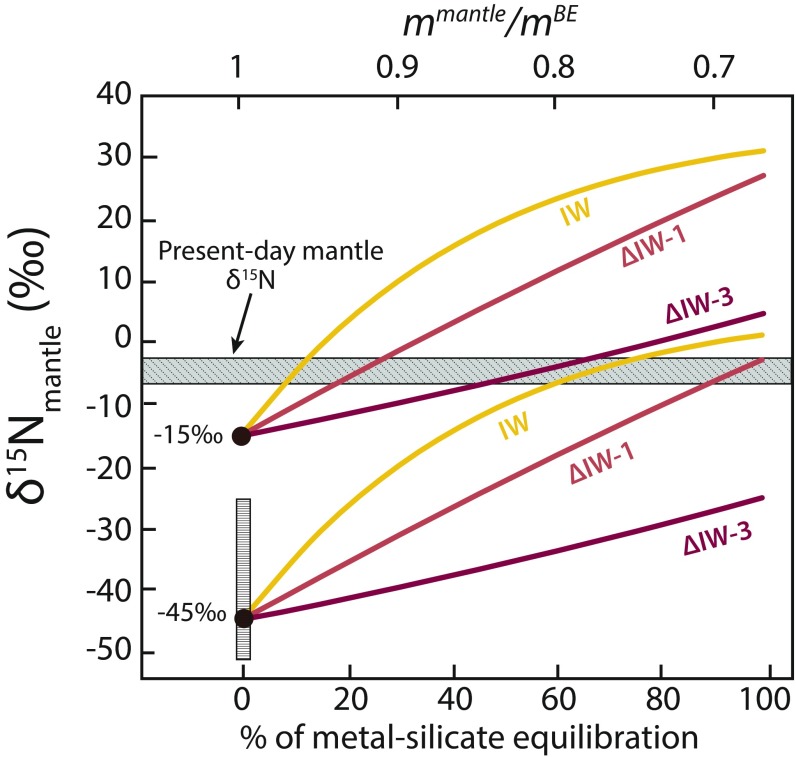Fig. 4.
Modeled δ15N values of the silicate proto-mantle during core formation as a function of core–mantle equilibration and fO2 conditions of the magma ocean. We explored 2 different values: the lowest (−45‰) and highest (−15‰) values measured in enstatite chondrites (13). The respective values used for DNmetal-silicate and ∆15Nmetal-silicate were 7 and −49‰ at IW, 3.02 and −89‰ at ∆IW −1, and 0.2 and −257‰ at ∆IW −3.1 (Table 1). The present-day value of the mantle is −5 ± 2‰ (gray bar; the thickness of the bar represents the 2σ SD), based on a compilation from diamonds and MORBs (3). This model assumes that ∆15Nmetal-silicate was not affected by Rayleigh distillation during the experiments, and thus only considers that the mantle’s value was modified by core–mantle fractionation without accounting for the effect of degassing. After 30% core–mantle (metal–silicate) equilibration, the modeled fO2 variations account for a difference in the mantle δ15N value of up to 27‰. The vertical bar between −51 and −25‰ represents the plausible range of δ15N values of Earth’s building blocks necessary to produce the present-day δ15Nmantle value of −5 ± 2‰ at fO2 conditions between ∆IW −3 and −0.5, assuming that core formation is the only process that fractionated N isotopes during the Earth’s early history. At ∆IW −3.1, assuming a value of −25‰ for Earth’s building blocks, complete metal–silicate equilibration is required to reach the present-day δ15Nmantle value. In contrast, at IW, conditions under which N is siderophile, the present-day δ15Nmantle value is attained at 60% metal–silicate equilibration from any source of N with a ≥ −45‰.

